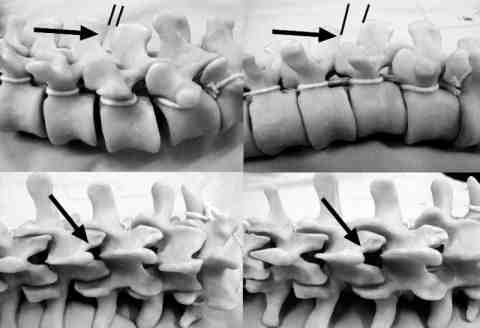Patient Positioning
Flexion of the patient’s spine
In order to place a spinal needle or catheter, or an epidural, it is necessary to have adequate flexion of the patient’s spine. Abolishing the natural lumbar lordosis increases the aperture between the vertebrae for passage of the needle (Fig 1).

Flexion of the patient’s spine
Neuraxial blocks can be performed with the patient in a sitting or in lateral position, depending on operator preference and patient ability. The sitting position confers the advantage of making the midline easier to identify, particularly in obese patients. It also increases hydrostatic pressure in the cerebrospinal fluid, which may make spinal needle placement and fluid aspiration easier. Practitioners should be able to perform blocks in either position (Fig 2).

Flexion of the patient’s spine
Most often, neuraxial blockade is performed with the patient awake. This is to enable the patient’s cooperation in achieving correct positioning, and to enable the patient to report any immediate complications of the procedure. Conscious sedation may be used in anxious patients. Epidural and caudal techniques are sometimes used once general anaesthesia has been administered, particularly in children or extremely anxious adults.
